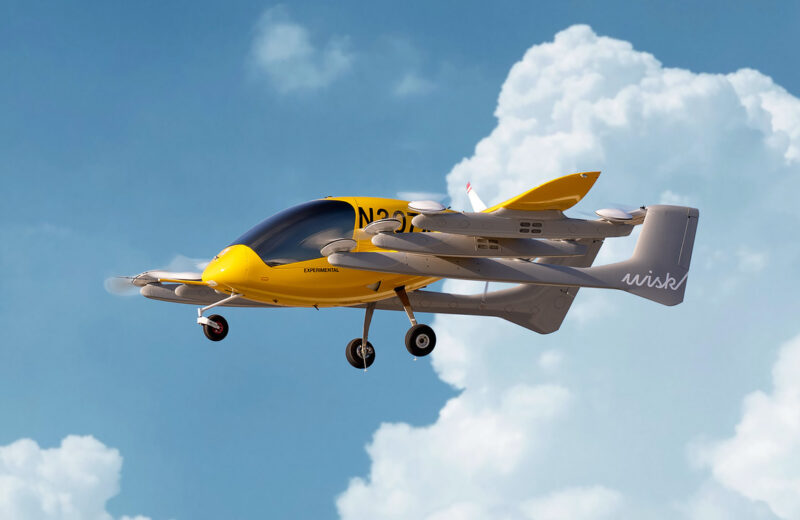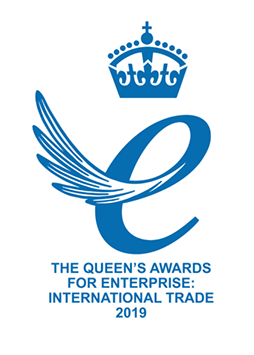The path to power(ed lift)

Class 14 CFR 21.17(b) or CS-23/CS-27. That is the question.
To build a successful aircraft you need to make thousands of correct decisions. One of the most crucial is how you certify it. Any VTOL aircraft that has more than one rotor must be certified under special conditions. Since May 2022, Class 14 CFR 21.17(b) has been the main FAA regulation for VTOL with CS-23 or CS-27 the main EASA regulations.
Both these pathways require a developer to certify to 10-to-minus-9 or one billionth failure levels (the same as commercial manufacturers). This is not cheap, especially if manufacturers aren’t scrupulous with supply chain strategy. It is not quick either. Certifying a clean-sheet aircraft design can take anywhere between five and nine years, according to the FAA. There is an old aerospace joke that an aircraft can only fly when the weight of the paperwork matches the weight of the aircraft.
David Norton, partner, head of Aviation Practice, Shackelford, Bowen, McKinley & Norton has advised on certification for over 25 years. He was also a military pilot and flies his own light aircraft.
“The cautionary note was that it is going to take a while to certify these new aircraft. It took us 10 years to get a simple air charter broker economic regulation through the Department of Transportation,” Norton tells Revolution.Aero.
“That being said safety regulatory bodies, like the FAA, are not prospective in nature – they’re reactive. It’s not their job to go out and create a path for industry to do new things; it is their job to regulate what industry wants to do and make sure it is done safely. That is not how an entrepreneur thinks,” says Norton. Amazed at how quickly the FAA has been moving, Norton believes the agency understands that it can’t be solely reactive because technology is developing at such a pace.
Take Wisk Aero, which is certifying under Part 21.17(b) with Part 23 (small airplane) as its certification basis. The Californian developer has plans to become a Part 135 operator with its sixth generation ‘lift and cruise’ aircraft (pictured above). No date has been released for entry into service.
Chris Brown, head of Communications, Wisk tells Revolution.Aero: “In the US, Part 23 makes the most sense for Wisk’s business, design, etc. In other countries, we will certify using the most appropriate certification basis.
“Certification costs vary on a number of factors. These projections use legacy certification projects as the forecast basis, while others are making new forecasts based on emerging technology certification activities. Wisk is fortunate to be in a strong financial position with backing from aviation leaders who know and understand the process and cost associated with the certification of a new aircraft,” adds Brown.
Archer is also certifying under Part 21.17(b) with a timeline for service entry in 2024. Archer’s recently unveiled Midnight aircraft (pictured below) differs from Wisk’s ‘lift and cruise’ because it uses ‘vectored thrust’. To start commercial operations, four separate FAA certifications need to be attained: type, production, airworthiness and operational.
US certification rules are built on the bones of the Federal Aviation Act (1958), which, as a statute, can only be changed by an Act of Congress. Within that structure, certain authorities are delegated to the FAA to promulgate regulations, the agency also has the authority to issue guidance on how to apply those regulations. Changing regulations is a multi-month, sometimes multi-year process. Issuing guidance is usually much faster.
Norton explains: “The FAA’s 2016 revision wasn’t for the VTOL industry, it was because in the small airplane industry it was too tough, in some cases, to get new aircraft on the market that didn’t really need to go through the full process for a 737. So, they decided to use this for VTOL too, but realised that, it too, was too complex. Then somebody at the FAA realised that we have a rule, its rule 21.17(b), that says for unique categories of aircraft the agency has the ability to selectively apply the applicable rules from the different Parts [for each aircraft design].”
The FAA confirmed to Revolution.Aero it will have the pilot training and operational requirements in place before the planned certification of the first vehicles. An inference that can be drawn is that the agency, like the developers, is learning on the go. It anticipates publishing the proposed rule in summer 2023, which leaves six to 18 months to certify for those that plan on 2024.
Where does the agency collect data on a new aircraft type? For VTOL it has been through the exemption process, according to Norton. “You can go to the FAA and say: ‘This Part says ‘X’, here is a unique circumstance, we want to be able to do this that would otherwise either violate or not be contemplated by the rules, here’s the reason why and here’s how we can do it to a safe or safer standard than required.’” The FAA can then grant an exemption, which saves money and also improves passenger safety, says Norton. Over the past four years, this is how the FAA has proceeded, allowing it to build a database to work with.
According to Louise Bristow, Archer’s vice president, Marketing and Communications, the FAA’s latest planned changes have not been met with alarm. “The agency’s change to certify eVTOL aircraft under its ‘special class’ process in Part 21.17(b) has, for us, proven to be largely administrative,” she tells Revolution.Aero.
The FAA added certain new requirements to Archer’s certification basis as a result of the change, including one change addressing the robustness of the aircraft to withstand bird strikes and another change covering the safety features of the aircraft related to complete loss of propulsive power in flight. “Both of these new regulatory requirements are already addressed in Midnight’s design and thus we don’t anticipate they will have any impact on Midnight’s development or timeline for certification,” says Bristow.
The Airworthiness Criteria from Archer’s amended Part 21.17(b) G-1 Certification Basis, will be published in the Federal Register in the coming weeks. The next step is to have the means of compliance formally accepted by the FAA.
Although the CFR 21.17(b) pathway is the chosen route for early developers, such as Archer and Wisk, most of the new entrants (and the FAA and EASA have had talks with more than 150 projects) see it as too expensive.
So why not combine existing certified technologies? “It depends on the type of certification, the existing technology companies want to leverage and the type of certification that existing technology went through,” says Wisk’s Brown.
This is the pathway UK-based startup Arc Aerosystems has embarked on. Differing from a supplemental type certificate (STC) like Ampaire’s EcoCaravan or Cranfield’s Britten-Norman Islander, Arc is developing three aircraft, two unmanned cargo drones, ARC-C150 and ARC-C600 (pictured below with team), and a nine-passenger, two pilot auto-gyro, ARC-P09.
“You’re talking about $2bn to certify an aircraft under special conditions,” Arc, CEO, Seyed Mohseni tells Revolution.Aero. “It is very different to an aircraft which is being certified under a general aviation path and for a typical four-seat air taxi this cost just doesn’t make sense.”
Mohseni’s team decided to move away from multi-rotor design on its passenger aircraft. Now the P09 is being developed as a single-rotor, which is unpowered during horizontal flight – forward thrust comes from a rear mounted rotor. That means it can qualify under a mixture of certification paths CS 23 and CS 27 – or Part 23 and Part 27 with the FAA. “Now we are talking about certification costs of around $200m, rather than $2bn. And having a single rotor unpowered during flight, there is already a certified technology which allows us to jump takeoff with less power due to the low disk loading and no-roll land.”
That technology, developed in Canada and certified back in 1968, was known as the Avian 2/180 Gyroplane. Arc bought the patent because it was certified under Part 27, which means its payload can be increased to 7,000lbs which leaves room for passengers. The technology in the P09 uses 50kw for takeoff, Joby uses close to 500kw.
The P09 is a hybrid aircraft, using a combination of batteries and gas turbine engines, which will run initially on SAF and later on green hydrogen, according to Mohseni. Arc decided on the hybrid system again to ease the certification process – there is no hydrogen cell or turbine system currently certified.
“Our strategy is to use existing, certified off-the-shelf solutions with a mind to the environment,” says Mohseni. “Empowering communities in remote areas is something that advanced air mobility can do now and we can provide a solution to do that. Why rush into flying over urban and densely populated areas?
“Thinking about the hype of our sector in US, why are you trying to certify an aircraft in 2024? Industry experts will tell you that is not possible. If you look at the market value of these companies that have gone public all of them have lost their values more than 50% and that is not good for the industry. It is not good to create hype that ultimately you know will bite you at the end and investors will lose their confidence,” adds Mohseni.
An organisation that does not get enough credit in the advancing of AAM is NASA. It is the agency that thinks outside the box, according to Norton. “At the end of the day, the FAA’s job is to protect passenger safety, that is what it boils down to. NASA’s job is to go and explore the universe. They have a different mission statement and a different mindset.” NASA has four active programmes researching AAM across airspace systems, aeronautics, vehicles and operational safety. It targets emerging aviation markets and cross industry collaboration, the data of which all feeds back into the FAA database.
“There are some people who say, ‘I think this should have happened yesterday’. I don’t. I think this is moving so fast it’s ridiculous, which is great. It is not going to happen tomorrow, but the fact the FAA just promulgated a rule that for the first time sets out, in a rule making process, steps or an example of how to certify a vehicle is a phenomenal step,” says Norton.
Subscribe to our free newsletter
For more deep dives from SAF Investor, subscribe to our email newsletter.







